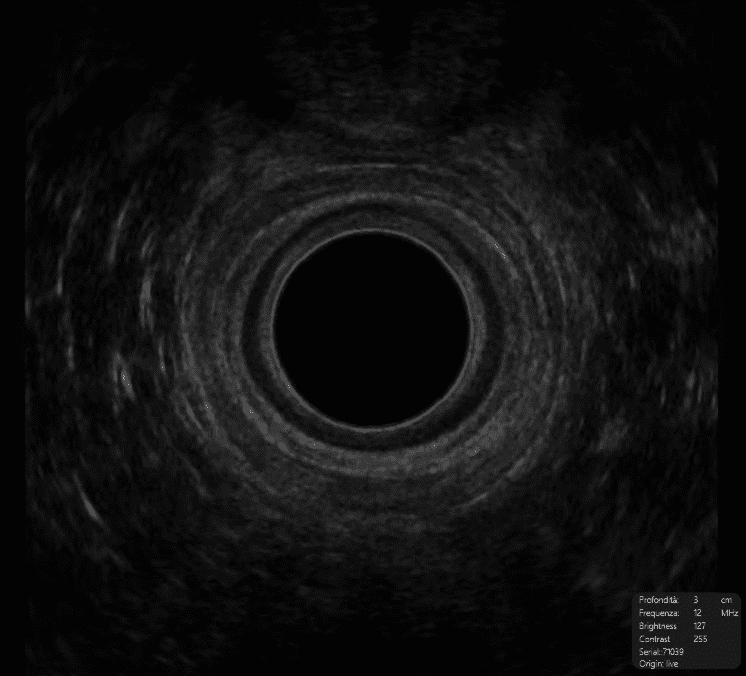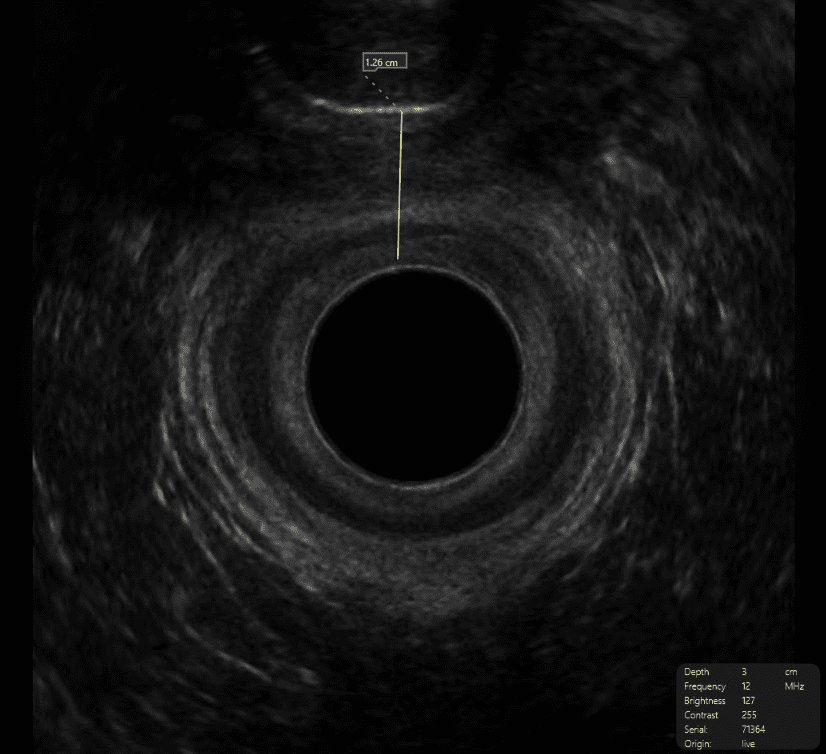Endo-Anal Ultrasound (EAUS) is a radiological imaging of the perianal structures, mostly the internal anal sphincter muscle and the external anal sphincter muscle and the spaces between and around them. It’s a very valuable test to prove or exclude anal sphincter muscle defects (injuries). It helps to find the reason for anal incontinence and to set up the operative plan. EAUS is also a helpful alternative to MRI in diagnosing perianal abscesses and fistulae and invaluable in staging anal cancer.
The endoanal ultrasound probe also images the wall and surrounding of the rectum – as Endo Rectal Ultrasound – and able to diagnose and stage rectal wall lumps or infiltrative processes such as abscesses, endometriosis (DIE – deeply infiltrating endometriosis), benign rectal tumors like leiomyoma as well as malignant rectal tumors like cancer.
Although it is a radiological examination, it is performed by proctologists, because they have the detailed anatomical knowledge of the area.
What to expect when going for this procedure?
This ultrasound scan is different from the usual abdominal ultrasound, where the ultrasound probe is placed over your belly, touching your skin. This is an endoluminal ultrasound scan, more like the vaginal ultrasound gynecologists do, or the prostate ultrasound urologist do: the ultrasound probe is placed inside the anus. This scan is not painful, no sedation needed. No preparation is needed prior to this scan. It takes about 3-5 minutes. Your doctor can give you an overall impression right after the scan, but she has to go through the images in details to be able to write your full report and diagnosis. Your official report you will receive during a free follow-up (minimum 1 day) after your test, where you will also discuss the findings and the options for treatment with your doctor.

